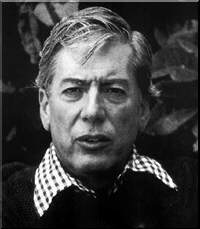
Surnai's production of Jameela Bai Kalaali closed the Ranga Shankara Theatre Festival. The play is adapted from Mario Vargas Llosa's La Chunga, and set in rural Rajasthan. Like the original, the name of the adaptation is also the name of the protagonist and the bar she runs. The present adaptation seems filtered taking in only the story from the original play, and not the underlying themes. The lesbian overtones have been played as a fantasy of the men who come and drink at the bar. The turning point of the original play is in the silence of La Chunga. Many people see the silence as the key to the story of the young girl's disappearance and her fate. "What did you do with her? When will you tell us?" the men ask La Chunga and her only response is her silence. At this point the playwright begins to play with the fantasy of the audience at large.
However, in Jameela Bai Kalaali, two things about the way the plot and themes are dealt, are disappointing. One, a scene detailing what actually happened to Chameli is explained. Later, Jameela Bai explains to the audience that her love for Chameli is of a maternal kind.
Jameela Bai Kalaali joins a list of plays that don't want to address homosexuality. This play stands proof of the fact that merely conforming to a story does not make for a successful adaptation. The `tall ageless woman' of Llosa's La Chunga is subverted. While talking of the changes, Ila Arun, who adapted the play says in Theatre Alive "... and with Rajasthan comes the colour and music of the state which I thought was perfect for the play." Strangely though, the play had a mix of recorded and live singing, which seemed out of place. The lead actress, Ila Arun, a singer and performer let down her audience by not singing live on stage.
Ila Arun as Jameela, remains cold on stage. While one can interpret this as Jameela's defence against the men who taunt and provoke her, the coldness in speech and facial expression continue in her interaction with Chameli (Rajeshwari Sachdev). On her part, Sachdev was trying very hard to fit into the role of Chameli. K. K. Raina, Ravi Jhankal, and Mitwa stood out with their energetic delivery and movement in their individual scenes with Arun and Sachdev. They were convincing in their portrayal of common thieves. Rajit Kapur was good as Jabra. Though his Hindi had an urban touch to it, his obvious study of a village thief and pimp, showed well in all the scenes. For a play that has been performed for nearly eight years prior to this performance, Jameela Bai Kalaali displays unacceptable glitches, like not camouflaging the lights on stage. On the whole, Jameela Bai Kalaali was disappointing.
Deepthy Shekhar
© Copyright 2000 - 2006 The Hindu



